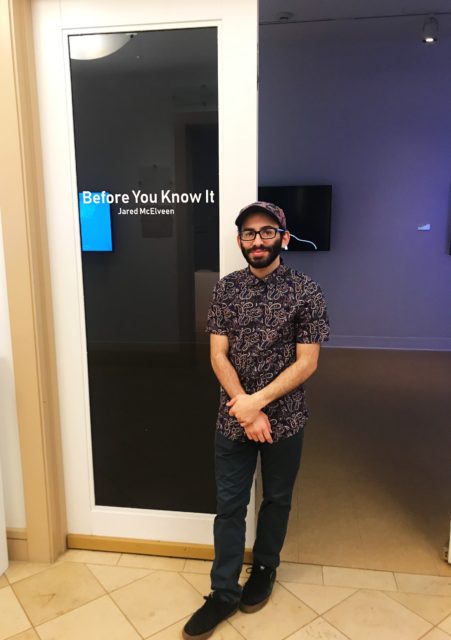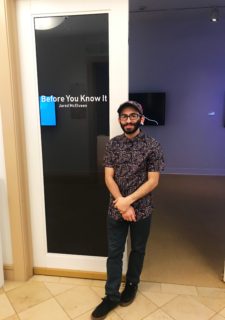An interview with Davidson Studio Art major Jared McElveen ’20 by gallery intern Sarah Jackson ’22.
Name, Hometown: Jared McElveen | Laplace, Louisiana
What is your primary medium?
I have been working mostly with animation, and that is the entirety of the show. All of my works in the show are made on Adobe programs, mostly Animate as well as some After Effects.
What does the title of your show mean?
“Before You Know It” is referring to the idea that the future is always here before you know it, and things like climate change, super storms, flooding, fires, and erosion are speeding up at an alarming rate. This future is not fifty years away it is more like ten years away or even one year away, and the next disaster could be tomorrow. So, this title is commenting on the future caused by climate change and that it will be here before you know it.
What are the most important themes/concepts/ideas you want visitors to take away from this exhibit?
I don’t want to put thoughts into anyone’s head, but my vision was that you come in and you are looking at these works and you are thinking about all of these disastrous events that are happening in the world today. Through this thought process I wanted viewers to think about what climate change is going to affect ‘before you know it’. I want people to go home and be aware and be active, at least in their local legislation, and of course with voting for presidents that are going to do something about environmental projections. I want people to be more active and aware about climate change and think about how it is changing our future.
What do you feel is the most significant piece in the exhibition and why?
I think the fire projection is the most significant piece. It wasn’t supposed to be the title work of the exhibition that everyone was going to look at, but it became that after the fact. It is so simple, but that simplicity can be scaled up by thinking of the magnitude of what it means and that isn’t just physical but mental as well.
How was the installation process for you? Was it difficult to transition out of the studio and into a gallery space?
It was very hectic. I was in here for two nights in a row trying to get things up. I had never worked with the television monitors so it was interesting to go from a computer, where you can pull up the GIFs in a web browser, to having to export those to videos.
How will art and the process of making continue to play a role in your life after graduation?
For a long time I was content with doing art on the side and wasn’t trying to break into the art world. But I am trying to get an internship this summer to try and build my portfolio and get a job in the animation industry right after school.


